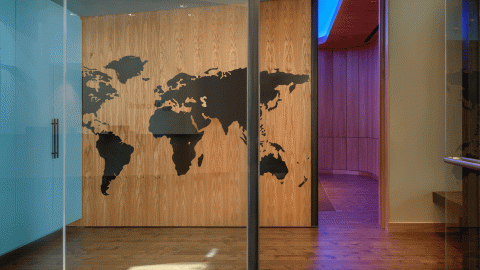How open data is driving change
Open data is being used to help us understand the Covid-19 pandemic. Over the last year, we’ve become familiar with the news alerts about the number of new cases each day or week; the number of deaths; and, more recently and optimistically in the United States, the number of vaccinations available. All of this is data and it is being shared by states and public health authorities to enhance broad understanding of this virus and its impact on us all.
In April 2020, Microsoft announced the Open Data Campaign, which encourages an approach to data that is as open as possible to reap social, economic and environmental benefits. Just like a good idea becomes a great idea when it is worked on collaboratively, data’s value grows exponentially when it is used to create life-changing solutions.
“We need to develop the ability to share data across organizational boundaries in a way that is safe and secure, and allows the data to be used effectively,” Jennifer Yokoyama, Microsoft’s Chief Intellectual Property Counsel, wrote in a Microsoft blog post at the time.
These stories published by Microsoft On the Issues help explain the value of open data, and celebrate achievements brought about by the open sharing of data around the world in the past 12 months.
[READ MORE: Catch up on these key skills, training and employment stories from Microsoft On the Issues]
What is open data and data collaboration?
Open data is data that is published for anyone to use without restriction. It makes it possible for organizations and individuals to collaborate and make better decisions around everyday topics such as the environment, economy and health care.
In this article, What do we mean by open data and data collaboration?, Jule Sigall, Associate General Counsel, Intellectual Property Group at Microsoft Corporate External and Legal Affairs, explains how open data helps organizations operate more effectively.
“Data can sit within silos inside private businesses and public-sector bodies. Opening it up so that people in different teams and departments can collaborate on solutions can unleash value from that data that might otherwise never have been realized,” he explains in the April 2020 article.
What sorts of things can open data be used for?
Open data is helping inform decision-makers in many areas.
This video includes examples of using shared data for urban planning, developing health care plans and measuring the impact of climate change on the Arctic.
This article, 4 ways sharing data is improving our world, also published in April 2020, includes examples of using data to tackle illegal fishing, help speed up cancer research and assist in humanitarian efforts.
[READ MORE: What you missed: Takeaways from the House hearing on technology and the free press]
What are the concerns surrounding open data?
Concerns about open data can run from possible privacy conflicts to a perception that the data itself is too valuable to make more freely available. In this Q&A, Open data: Your questions answered, published in July 2020, Jule Sigall tackles some of the most common misconceptions about open data.
He stresses that there are many effective ways to secure sensitive information and still make your data open for collaboration. Additionally, he points out that guarding data can work against a business’s interests: “There’s almost a hidden cost to being selective or protective around your data. You might be preventing it from being reviewed or understood in a way that you’re currently not looking at it.”
How is open data helping track glacial melting in the Himalayan region?
In this article from January 2021, Tracking the effects of glacial melting at the top of the world, open data is being used on the frontline of climate change.
The glaciers of the Hindu Kush Himalayas are the main source of fresh water for around two billion people living in the region. But climate change is affecting the glaciers, with many melting and shrinking faster than expected.
Glaciers are like a water storage tank. But the amount of water present is depleting … in 10 years, we might need to find another source of water
− Tenzing Chogyal Sherpa, ICIMOD
Open data is being used to accurately and quickly measure how the landscape is changing in order to minimize its impact.
As Microsoft data scientist Anthony Ortiz explains: “You really need to understand how the glaciers are changing, but it is a mostly manual process. It relies on analyzing multiple layers of satellite imagery, delineating all those layers one by one, to conduct an analysis of how things are changing.” However, by pulling in data from satellites and mapping platforms, AI is able to speed up that process.
[READ MORE: One year later: How Microsoft is supporting communities in Washington state through the pandemic]
How is sharing data helping to tackle Covid-19 in the UK?
In order to control the spread of Covid-19, authorities in London, U.K., urgently needed to understand citizens’ levels of activity, as this article, How sharing data is helping fight the spread of Covid-19 in the U.K., published in January 2021, explains.
At The Alan Turing Institute – the U.K.’s national center for data science and artificial intelligence – a study monitoring air quality in the capital was rapidly repurposed to measure the city’s busyness.
Working with the London Data Commission and City Hall, The Alan Turing Institute launched a new project, codenamed Odysseus, to gather vital behavioral information from existing open datasets – supporting London authorities during lockdown and with planning capabilities once those restrictions were lifted.
“The idea was really to try and identify synergies between all of these datasets, and exploit those to get more information than perhaps just looking at one single dataset,” says Mark Girolami, Programme Director for Data-Centric Engineering at The Alan Turing Institute.
The team now believes the data it has accumulated can be used in the future to assist with crisis management planning and to predict how different sections of the population will respond to government advice.
For more on open data, visit Microsoft’s Open Data Campaign website. And follow @MSFTIssues on Twitter.








